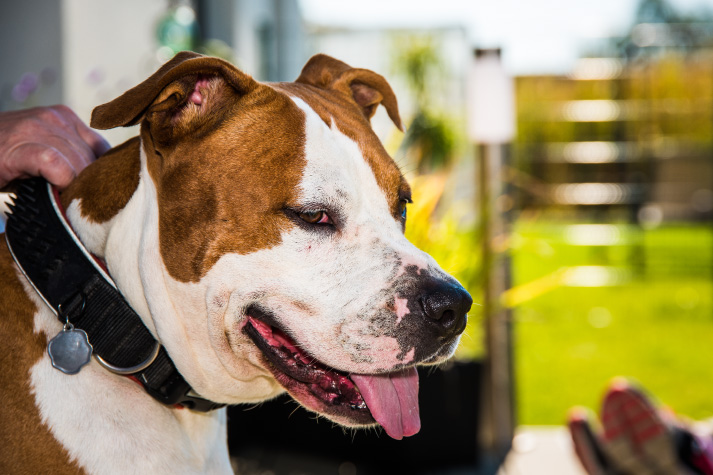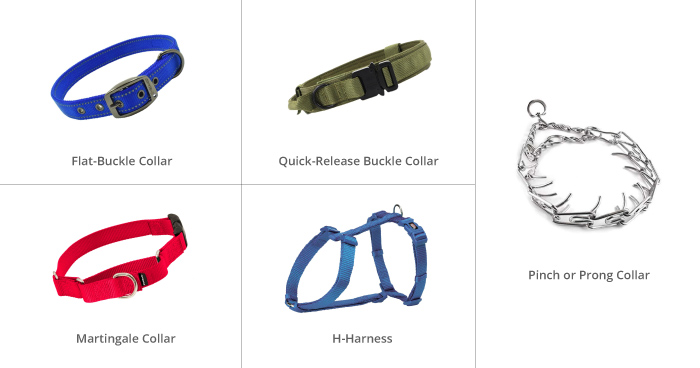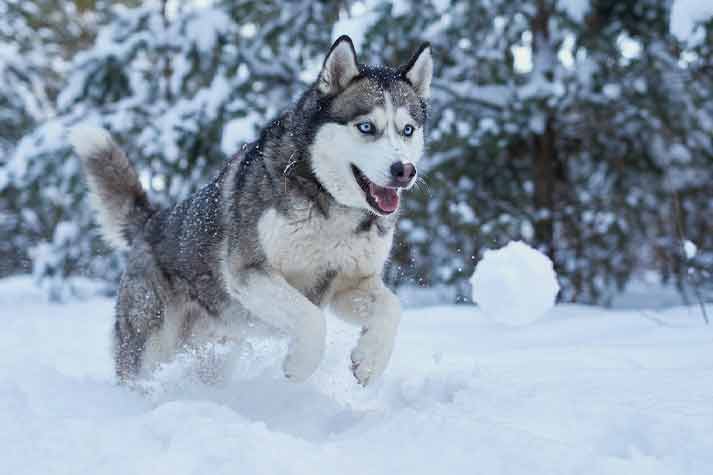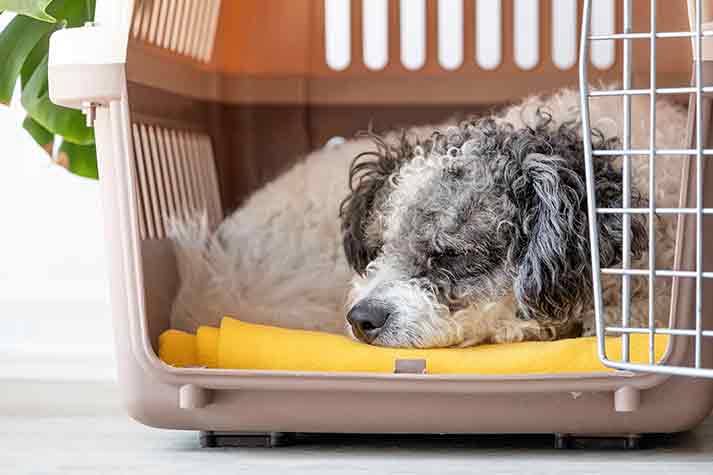
11 Dec
How to Choose the Correct Collar for Your Dog
Pets are an important part of our lives. A sizeable percentage of households are now pet owners, with dogs being the pet of choice. Given that the pet population is only increasing, it is natural that the pet product sector would grow with it. While pets are a joy to have and to be around, they also require attention, affection, and care for them to truly thrive. They can be smart and inquisitive at times, and stubborn and childish otherwise, which is why an accessory like a dog collar is important for their safety.
A dog collar is a simple wearable product that serves many purposes. A collar acts as a form of ID, as you can attach your details to it via dog tags, and helps you walk your dog once a leash is attached to it. With a plethora of products on offer, choosing the correct collar can be challenging, which is why we’ve discussed the factors that you should consider when choosing a collar for your dog, whether your dog likes to lounge indoors or roam outdoors during pet travel.
Choosing the Right Type of Dog Collar
The first thing to consider is the type of collar you’re looking for. To do so, you need to consider your use of a collar and what you need from it. Are you planning to use the collar for ID purposes, or as a training accessory? Where will the collar be worn? Depending on your use case, some collars may suit your dog better than others.

Types of Dog Collars
- Flat-Buckle Collar: This is one of the most widely used and common collar types, and you may have come across it already. A flat buckle collar is a relatively inexpensive collar that closes in a snap or buckle style. These are available in different colours, sizes, and materials, and are usually well-designed. Additional aesthetic enhancements are also available on some of these collars, such as 3M reflective strips for nighttime visibility.
- Quick-Release Buckle Collar: This collar has plastic or metal buckles that have a release mechanism. This collar fastens easily and does not unbuckle even when someone is tugging on it. This collar is usually used in indoor settings like pet daycare or boarding, as it helps the staff remove it more quickly if required.
- Martingale Collar: These collars have a loose fit around the neck for a dog’s comfort, which then tightens when the dog pulls on its leash. Such collars are a great option if your dog is an escape artist and slips out of their leash with ease. Such collars are safer than choke collars and are helpful if you’re training your dog at the moment.
- H-Harness: The H-harness is one of the best options for an outdoor-use collar/harness, especially if you’re someone who is outdoors frequently with your dog. instead of fastening at the neck, this harness has the D-ring on the dog’s back to prevent any undue pressure and allow a full range of motion. These harnesses are also difficult to slip out of, making them a good fit for those cheeky escape artist pups.
- Pinch or Prong Collar: Such collars have small metal prongs that pinch or dig into a dog’s skin when their leash is pulled. This collar was originally meant to train unruly or aggressive dogs; however, this option is NOT safe and will cause harm to your dog. It is sometimes used when transporting dangerous dogs during pet travel. This collar has only been included on this list to give you an idea of what it looks like & how it functions so you may avoid it. Never choose a collar that causes undue harm to your pet.
Material of the Dog Collar
Once you’ve decided on the type of collar you want for your dog, you should consider the material of the collar as well. Your dog's comfort is important, and the material should complement their lifestyle. Do keep in mind that an easy-to-wash collar is important to save you some hassle, as your dog can get dirty fast.
Here are a few common materials used for dog collars:
- Nylon: This material is cost-efficient and generally works for most dogs, but could potentially cause some skin irritation, especially if your pet has a thin coat.
- Fabric: Fabric collars are some of the most comfortable collars your dog can have, as they are gentle on their fur and skin and are unlikely to cause any discomfort due to rubbing or pinching.
- Leather: Leather collars give a fashionable look to your dog while being durable and relatively weather-proof. Depending on your stance on the ethics of animal products, you may or may not want to swap genuine leather for a faux leather product.
How to Find Out Your Dog’s Collar Size
- Breed-Specific Requirements: Different dog breeds have different builds, so the breed of dog plays a big role in the collar size they require. A chihuahua will have a significantly smaller build compared to a labrador, for example. Most collars come with breed-specific recommendations which should fit that specific breed comfortably, and while not an exact measurement, they help provide buyers with a ballpark figure of what they can expect from it.
- Measurement: You can break out the measuring tape and measure your dog’s neck to get an exact number before buying a collar. Wrap the tape around your dog’s neck to get a measurement, then add an inch to the size if you have a toy breed or two inches if you have a medium-sized breed.
- Width of the Neck: The appropriate width for a collar is determined by the dog’s breed as well. Thicker collars are more suited for big and strong dog breeds, while wider collars are better suited to smaller breeds to avoid any pressure on their necks.
- Fur Length/Coat: We don’t like our hair being stuck or tangled, and neither do our dogs. Fur being tangled inside your dog’s new collar can lead to discomfort and irritation, so make sure their fur is at a level where they won’t be bothered by the addition of a collar. The best solution is to get an adjustable collar or harness to avoid any fur being stuck.
- Growth: Remember that puppies grow fast, and you must account for this growth if you're buying a collar for a puppy. An adjustable collar with different preset sizes can make sure your pup doesn't outgrow its collar too quickly and can save you some cash in the process.
To conclude, the best harness is one that suits your pet and keeps them safe in a comfortable manner. There is no one-size-fits-all in this case, so make sure to check out the various options on display before deciding. A good collar will be made of high-quality materials, whether it is cloth or leather, and will be somewhat adjustable to fit your pup more easily. Make sure to steer clear of any collars that are advertised as choke or pronged collars, as these will only place your pup in harm's way.






AUTHOR’S BIO
Carry My Pet
Passionate pet enthusiasts and globetrotters, dedicated to easing furry friends' journeys worldwide. Penning tales of compassion at CarryMyPet, where every relocation is a tail-wagging adventure.